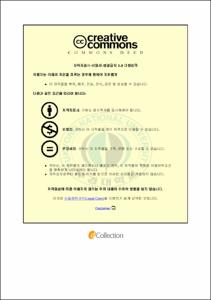코퍼스에 기반한 '바람'의 한영 연어 분석
- Alternative Title
- A corpus-based analysis of Korean-English collocation with the word 'Baram' in Korean
- Abstract
- Abstract
The purpose of this study is to explore the structural differences between English and Korean by comparing the collocation results of adjectives, nouns, verbs, and adverbs extracted from KAIST Concordancer with the Korean search term 'Baram'(which means wind in English) with those of English Concordancer provided by a website, www.lextutor.ca with the use of English search term 'wind'. The findings of this study are as follows:
First, after analyzing collocation patterns between adjectives and the noun, I learned that frequency of adjectives of English was lower than that of Korean but the number of adjective types of English was greater than that of Korean, expecially with the high frequency of strength-related adjectives. The number of temperature & feeling-related adjectives of English was the same as Korean. There were much more feeling-related adjectives in Korean than English. From this result, I discovered that there existed different views between these two languages regarding the same natural phenomenon called 'Baram'.
Second, after analyzing collocation patterns between nouns and the noun, although the gap in the frequency of the nouns collected from two corpora was huge, the number of the discovered noun types was not big. There were four kinds of nouns in English which were frequently used with the word 'wind' in the field of seasons, directions, and time. Other Korean nouns except these three kinds of nouns were expressed in different ways such as particle + prepositional phrases, nouns with different spellings and adverbs. In case of nouns with different spellings, I found out limitations in corpus data and I also found many other words meaning 'wind' in English.
Third, after analyzing collocation patterns between verbs and the noun, the bonding of the noun and verbs was weaker than that of adjectives and the noun, which means people can choose verbs which go with the noun 'wind' more freely than adjectives. In case a Korean verb corresponds to several English verbs, the verb can be expressed in a way of be+adjective+noun.
Lastly, after analyzing collocation patterns between adverbs and the noun, since adverbs have no direct relation to the noun, adverbs are drawn with a fixed verb 'blow' which is most frequently used with the word 'wind'. Collected adverbs were divided into four categories including temperature, strength, feeling, and time. It turned out that the binding force between adverbs and the fixed verb was much weaker than that of between adjectives and the noun. Strength-related adverbs were most frequently used in both languages. Discovered patterns of adverbs were more diverse since they were accessory factors in the sentences as we know. The first reason why few adverbs were found in English corpus was that adjectives in English were translated into adverbs in Korean in the process of translation. The second reason was that many prepositional phrases in English could be put into adverbs in Korean in translation.
- Issued Date
- 2011
- Awarded Date
- 2011. 8
- Type
- Dissertation
- Publisher
- 부경대학교 교육대학원
- Alternative Author(s)
- Noh, Hyun Seok
- Affiliation
- 부경대학교 교육대학원
- Department
- 교육대학원 영어교육전공
- Advisor
- 윤희수
- Table Of Contents
- 차 례
Abstract v
Ⅰ. 서 론 1
1. 연구의 필요성 및 목적 1
2. 연구과제 4
3. 연구의 제한점 4
Ⅱ. 이론적 배경 및 선행연구 5
1. 코퍼스언어학 5
2. 어휘력과 연어능력의 관계 6
3. 교착어와 굴절어의 개념 8
4. 선행연구 8
Ⅲ. 연구 방법 12
1. 연구도구 12
1.1 카이스트 콘코던서(KAIST Concordancer) 12
1.2 영어 코퍼스 14
2. 자료 수집 및 절차 16
2.1 한글색인의 품사별 데이터 수집 및 절차 16
2.2 영어 코퍼스의 품사별 데이터 수집 및 절차 17
Ⅳ. 연구 결과 분석 19
1. 형용사-명사 관계 데이터 분석 19
2. 명사-명사 관계 데이터 분석 27
3. 명사-동사 관계 데이터 분석 32
4. 동사-부사 관계 데이터 분석 36
Ⅴ. 결론 및 제언 41
1. 결론 41
2. 제언 43
참고 문헌 44
- Degree
- Master
- Files in This Item:
-
-
Download
 코퍼스에 기반한 '바람'의 한영 연어 분석.pdf
기타 데이터 / 1.75 MB / Adobe PDF
코퍼스에 기반한 '바람'의 한영 연어 분석.pdf
기타 데이터 / 1.75 MB / Adobe PDF
-
Items in Repository are protected by copyright, with all rights reserved, unless otherwise indicated.